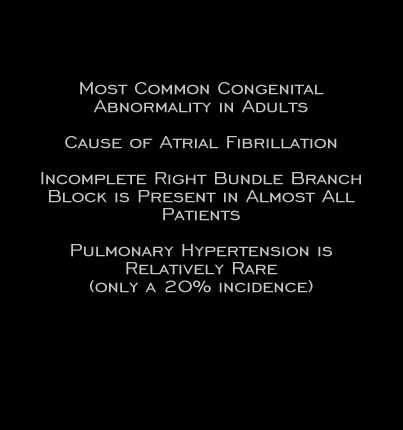
The two tracings just shown serve to remind us of several important features that characterize atrial septal defects in the adult. 1. It is the most common congenital cardiac abnormality in the adult and may cause no symptoms for many years. 2. It may be a cause of atrial fibrillation. 3. The ECG reveals incomplete right bundle branch block in almost all patients. 4. Pulmonary hypertension and the associated right ventricular hypertrophy are quite rare, occurring with an incidence of about 20%.
